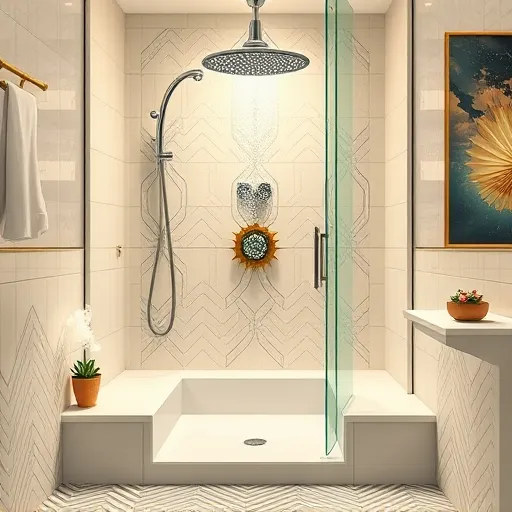
Accessible Shower Designs for Small Bathrooms | Space-Saving Ideas
What Are the Key Considerations When Choosing Accessible Shower Designs for Small Bathrooms?
Designing an accessible shower for a small bathroom requires thoughtful planning to balance functionality, comfort, and aesthetics. Space constraints demand innovative solutions that optimize every square inch without compromising accessibility standards. Key considerations include door type, shower size, safety features, and overall bathroom layout.
Space Efficiency: Ensuring the shower fits comfortably within limited dimensions while remaining easily accessible.
Safety Features: Incorporating slip-resistant flooring, grab bars, and bench seating for secure usage.
Design Aesthetics: Seamlessly blending accessibility features with modern bathroom décor.
Budget Constraints: Selecting cost-effective yet durable materials and finishes.
How Can You Maximize Space While Maintaining Accessibility in Small Bathrooms?
Maximizing space in small bathrooms while ensuring accessibility involves strategic choices in layout and design. Consider the following approaches:
Opt for Frameless Glass Shower Enclosures: These create an open feel, visually expanding the space and providing easy access without bulky frames obstructing movement.
Use Sliding or Pocket Doors: Traditional swinging doors can be cumbersome, especially in tight spaces. Sliding or pocket doors save clearance space and improve flow.
Incorporate Corner Showers: Positioning the shower in the corner utilizes unused space effectively and can be designed with compact dimensions.
Choose Compact Fixtures: Wall-mounted sinks, toilets, and storage optimize floor space and reduce clutter, creating a more accessible environment.
For a comprehensive approach, exploring affordable bathroom remodeling options can help determine the most effective budget-friendly strategies for space maximization.
What Are the Best Types of Doors for Small Bathrooms with Accessible Showers?
Door selection profoundly impacts space efficiency and accessibility in small bathrooms. Here are the most suitable options:
Sliding Doors: Perfect for minimizing space usage, sliding doors glide along tracks and do not require clearance to open outward or inward.
Euro-Style Pivot Doors: These doors pivot on a central hinge, allowing for smooth operation in limited space without swinging into the room.
Curbless Shower Entries: Eliminating the threshold creates a seamless transition, facilitating wheelchair accessibility and easier cleaning.
Choosing the right door type not only enhances functionality but also elevates the overall aesthetic of your bathroom. To see exemplary transformations, consider reviewing top-rated bathroom remodeling projects for inspiration.
How Do You Incorporate Safety Features Without Sacrificing Style in Small Bathrooms?
Safety is paramount in accessible shower designs, especially in small bathrooms where space is limited. The challenge lies in integrating these features attractively and discreetly:
Grab Bars: Choose sleek, stainless steel grab bars that complement the bathroom’s décor. They can be installed in strategic locations for support without disrupting visual harmony.
Slip-Resistant Flooring: Modern textured tiles or specialized slip-resistant coatings provide safety while maintaining a stylish look.
Built-In Seating: Incorporate a compact, tiled shower bench or fold-down seat that doubles as a safety feature and functional element.
Lighting: Adequate, well-placed lighting enhances visibility and prevents accidents. Consider LED fixtures with waterproof ratings for safety and ambiance.
For additional smart upgrades that boost both safety and convenience, visit smart bathroom upgrades.
Can You Create a Spa-Like Experience in a Small Bathroom with Accessible Shower Designs?
Absolutely. Innovative accessible shower designs for small bathrooms can emulate luxurious spa experiences through strategic features:
Rainfall Showerheads: Install overhead rainfall heads for a soothing, immersive shower experience.
Adjustable Water Controls: Easy-to-reach, temperature, and flow controls ensure comfort and safety during use.
Natural Materials and Neutral Colors: Use stone, wood-look tiles, or subtle color palettes to evoke tranquility.
Sound and Light Features: Integrate waterproof speakers or chromatherapy lighting to enhance relaxation.
Innovative designs not only improve functionality but also elevate your daily routine, making even the smallest bathrooms a luxurious retreat.
What Are the Cost-Effective Solutions for Installing Accessible Showers in Small Bathrooms?
Cost-efficiency in small bathroom renovations is achievable without sacrificing quality or accessibility. Some affordable strategies include:
Modular Shower Units: Prefabricated units offer quick installation and customization at a lower cost.
Resurfacing Existing Surfaces: Instead of complete demolition, resurfacing or re-tiling existing areas reduces expenses.
DIY-Friendly Features: Installing grab bars or non-slip mats can be simple upgrades that significantly improve safety.
Choosing Cost-Effective Materials: Porcelain tiles, durable acrylic panels, and budget-friendly fixtures can yield excellent results.
To explore comprehensive options, review affordable bathroom renovations and find ways to optimize your budget.
How Do You Ensure Accessibility Meets Modern Aesthetics in Small Bathrooms?
Blending accessibility features with contemporary design ensures your bathroom remains stylish and functional. Techniques include:
Minimalist Hardware: Use sleek grab bars, handles, and controls in finishes like brushed nickel or matte black for a modern look.
Open Shower Floors: A curbless design with large-format tiles creates a seamless, modern appearance.
Concealed Storage: Built-in niches or niches with hidden edges help maintain a clean, uncluttered look.
Neutral Color Palettes: Light shades with contrasting accents enhance visual appeal and perceived space.
Creating a harmonious balance between safety and style elevates small bathroom spaces into functional, inviting retreats.
Frequently Asked Questions
What are the best space-saving features for accessible showers in small bathrooms?
Features like sliding doors, corner installations, wall-mounted fixtures, and compact benches effectively maximize space and maintain accessibility.
How can I improve safety in my small bathroom while designing an accessible shower?
Incorporate slip-resistant flooring, grab bars, built-in seating, and adequate lighting. These elements ensure safe usage without detracting from the overall aesthetic.
Are there affordable options for installing accessible showers in small bathrooms?
Yes, modular units, resurfacing existing surfaces, and choosing budget-friendly materials can make accessibility upgrades economical without compromising quality.
Can I create a luxurious shower space in a small bathroom?
Absolutely. Features like rainfall showerheads, waterproof lighting, and natural materials can transform a compact bathroom into a spa-like sanctuary.
What are some design tips to blend accessibility features seamlessly with modern décor?
Use minimalist hardware, neutral palettes, concealed storage, and open floor plans to ensure safety components complement rather than clash with your bathroom’s aesthetic.
Transform your small bathroom into a practical and stylish space with innovative accessible shower designs tailored for compact areas. To start your renovation journey, consider consulting with experts at Presto Renovations and explore our comprehensive remodeling services.




















